Content
Reproduction of Japanese quince is not particularly difficult even for a novice gardener, if you know how and when to carry it out. Therefore, in order to avoid serious mistakes, you should study in advance all possible ways to get new shrub seedlings in order to choose the most optimal option. And you should also familiarize yourself with the features of each method and the conditions for its implementation.
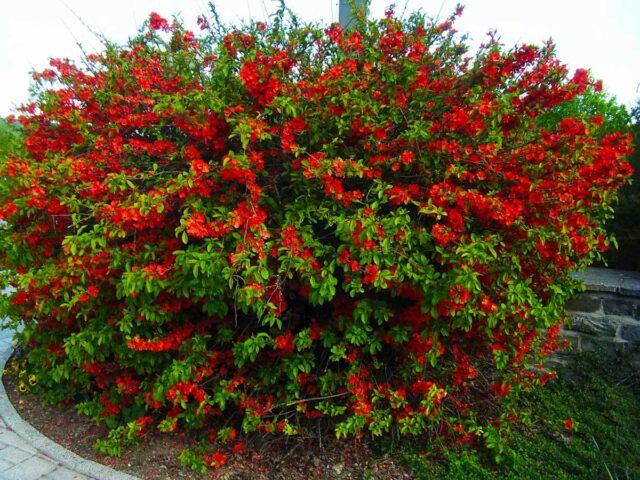
Japanese quince reproduces well vegetatively.
Breeding methods for quince
Chaenomeles, or Japanese quince, can be propagated by seed, layering, root growth and grafting. The first method makes it possible to obtain many new seedlings, but they do not preserve the species qualities of the mother plant.
All other breeding methods are recommended when it is necessary to preserve the Japanese quince variety you like. In this case, the plants fully reproduce the characteristics of the mother bush. But the disadvantage of these propagation methods is that they only produce a limited number of seedlings.
Is it possible to cut quince
To obtain new planting material for Japanese quince, you can also use the cuttings method. However, the survival rate of seedlings is 30-50%, which is the norm for this crop.
For some ornamental grafted varieties of Japanese quince, cuttings may be the only way to obtain seedlings that fully retain their species properties.
Is it possible to divide the rhizome
The division of the bush, as a method of reproduction, is unacceptable for this culture, since the parts obtained do not take root after transplantation. Alternatively, there can be a method of planting the root growth that the plant forms annually at the base.
How to propagate Japanese quince cuttings
Reproduction by cuttings of Japanese quince is possible in the summer, namely, in early June. During this period, many new young shoots are formed on the shrub. Cuttings should be cut in dry, cool weather.
What tools and materials will be required
For cutting Japanese quince, you need to use a sharp knife, which will ensure smooth, not torn cuts. Before carrying out the procedure, the instrument should be disinfected with an alcohol-containing liquid or scalded with boiling water. This will eliminate the likelihood of infection in open wounds.
It is necessary to prepare a substrate consisting of peat and sand in a ratio of 1: 3. And for planting cuttings, use wide containers 15-20 cm high. In case of rooting them in water, you need to prepare tall transparent glasses.
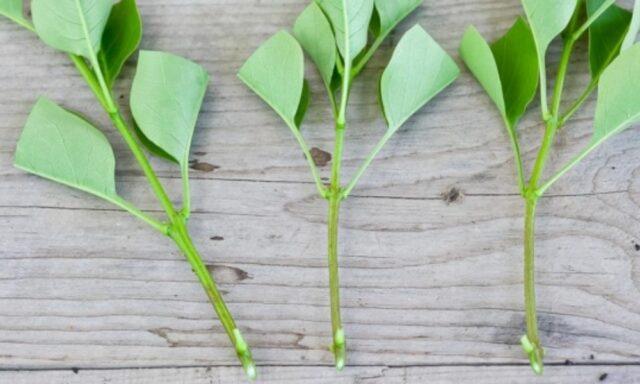
Cutting Japanese quince is not recommended at temperatures above +20 degrees
How to cut Japanese quince
For reproduction, you need to use well-developed young shoots with a diameter of 0.5-0.7 cm. They must be divided into parts, each of which must have two internodes. The bottom cut should be done obliquely 1 cm below the first pair of leaves. And the upper, even one - is 1.5 cm higher than the internodes.
How to root Japanese quince cuttings
To increase the percentage of rooting cuttings, before planting in the substrate, they must be kept for at least 2 hours in a solution of "Heteroauxin".
For planting, the prepared wide containers should be filled with a sandy-peat substrate. Then the soil needs to be well moistened and the surface is leveled. After that, plant the cuttings at an angle and compact the soil a little at their base.
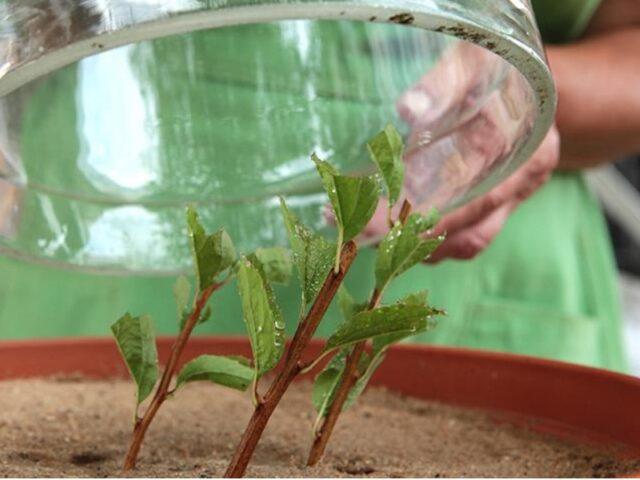
Japanese quince cuttings take root in the ground after 30-40 days
At the end of the planting procedure, cover with a transparent film and place the container in a bright place with a temperature of +23 degrees. Further care: regular airing of the cuttings, watering as the top layer of soil in the container dries up. As soon as young leaves begin to grow, the shelter can be removed, as this sign indicates the appearance of roots. You can transplant seedlings to a permanent place at the beginning of autumn, when they are strong enough.
You can also root cuttings of Japanese quince in water. But for the procedure to be successful, it is necessary to exclude the likelihood of decay of the shoots as much as possible.
This requires:
- do not change, but only add water as it evaporates;
- put the cuttings in a spacious container so that they do not touch;
- provide diffused lighting, keeping mode within + 23-25 degrees.
When roots grow in water up to 5 cm long, the cuttings should be transplanted into pots. And they can be moved to a permanent place only in the fall or spring.

The lower cut of the cutting is made oblique to increase the rooting area
How to propagate Japanese quince seeds
For planting, you need to use seeds collected from ripe fruits in the fall. Before carrying out the procedure, they should be separated from the pulp. Then it is necessary to rinse with water and dry slightly until the characteristic flowability appears. For successful germination of quince seeds, stratification is needed, which implies exposure to low temperatures.
Therefore, planting can be carried out in the fall directly into the open ground. In this case, stratification will take place in winter. To do this, you need to dig up the site. Smooth the surface and plant the seeds in a moistened soil to a depth of 2 cm. With the arrival of spring heat, they will germinate.
Reproduction of quince seeds by seeds is also possible at home. In this case, planting is recommended in December. To do this, it is necessary to fill wide containers with a sandy-peat substrate, without adding 1 cm to the edges.After that, spread the seeds at a distance of 2 cm.And then sprinkle them on top with a layer of substrate 0.5-1 cm thick.At the end, compact the soil surface and moisten it from a spray bottle.
For successful reproduction of Japanese quince seeds at home, after planting, you need to cover the container with a transparent film and put it in the lower compartment of the refrigerator for two months for stratification. After the waiting period has expired, the container must be transferred to a light windowsill and the temperature of the content must be maintained within +23 degrees. When the seeds germinate and the sprouts get stronger, the film can be removed. Further care: watering as needed, transplanting into separate pots when four true leaves appear.
Grown seedlings from seeds must be kept at home for a year so that they can fully grow stronger. They can be planted in a permanent place in open ground only at the beginning of next summer.
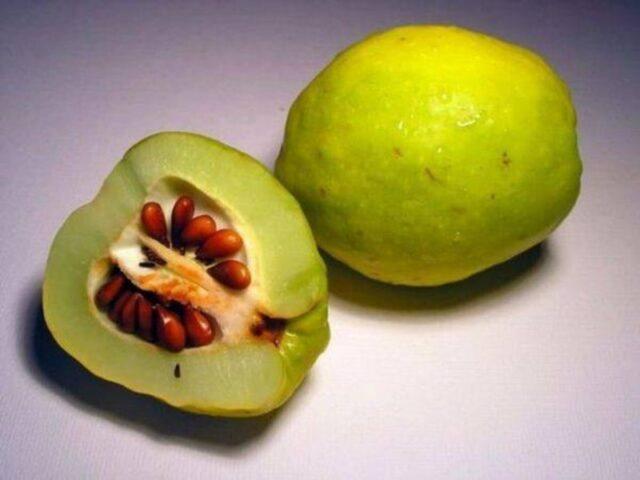
The germination rate of quince seeds is 85%
How to propagate quince by layering
You can propagate the common quince by layering. This is considered the easiest way to get new plant seedlings.To do this, in early spring, young lateral shoots must be bent to the ground and buried in the soil by 8 cm, leaving only the top. And so that the branches do not unbend, they need to be fixed with staples.
Throughout the season, soil moisture must be monitored. Also, periodically, the cuttings should be fed with organic matter, which stimulates the growth of roots. It is recommended to separate the young seedling from the mother bush only next spring. Then he will be able to get stronger before winter.
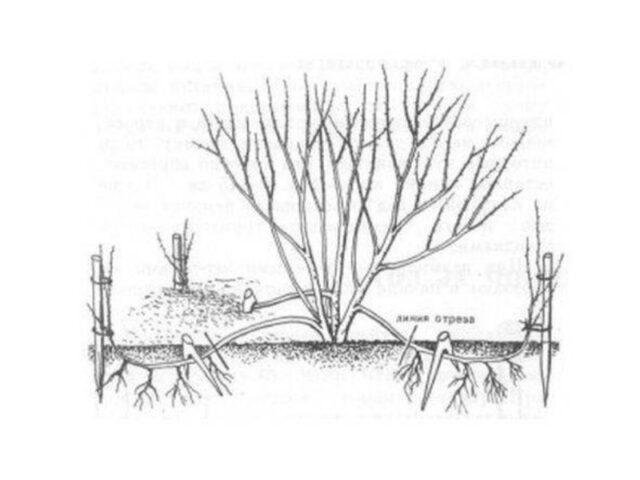
Saplings obtained from cuttings have a 100% survival rate
Reproduction by young root shoots
Reproduction of the Japanese quince shrub is also possible by root shoots. To do this, it is necessary to select shoots of 10-15 cm and a diameter of at least 1 cm. They must be separated with a shovel along with the roots from the mother plant and immediately planted in a permanent place.
For successful survival, it is necessary to control the soil moisture level, since even a slight drying out of the roots during the adaptation period can lead to the death of seedlings. Throughout the season, the plant should be provided with adequate care. It includes loosening the soil after each wetting to maintain soil aeration. Weeds should also be removed in a timely manner. And in hot periods, it is necessary to lay 3 cm thick straw mulch at the base of a young shrub. This helps prevent excessive evaporation of moisture.
Reproduction by grafting
Many ornamental varieties of Japanese quince are propagated by grafting on a wild-growing seedling.
This breeding method should be used in the spring. Experienced gardeners recommend the use of budding, that is, inoculation with an "eye". It is necessary to harvest cuttings of varietal chaenomeles in July or August during the period of active sap flow. And then save in a damp cloth in the refrigerator.
For grafting, it is necessary to cut off the bud from the middle part of the varietal shoot with a sharp knife with a shield. Then make a T-shaped cut on the rootstock shoot and fold back the edges of the bark. After that, drive the kidney shield under it. Return the bark to its place, cover up the graft with garden varnish. If everything went well, the kidney will begin to develop in a month.

All incisions during vaccination must be made with a sterile instrument.
Conclusion
Reproduction of Japanese quince can be carried out in different ways, and each of them allows you to get young seedlings, if you strictly adhere to all the recommendations. Therefore, even a gardener who does not have many years of experience is able to cope with this task. Especially if you use cuttings and root shoots. But only a professional can handle the grafting and grafting of this fruiting shrub.








